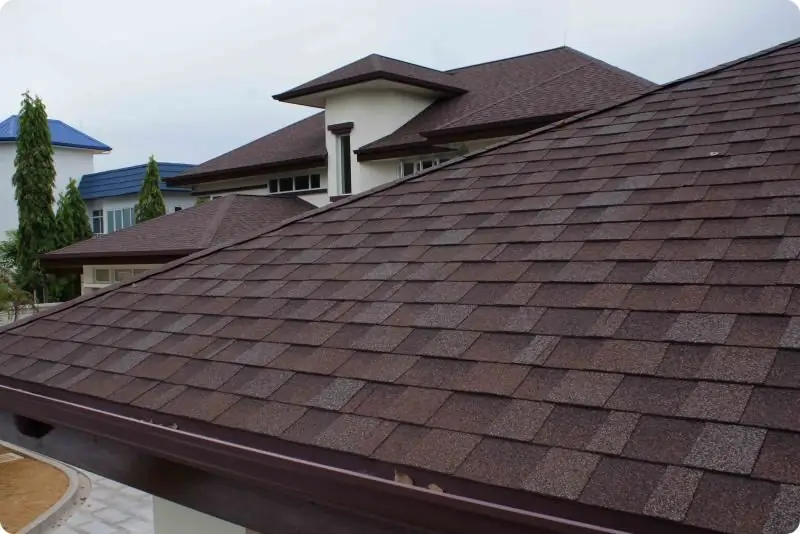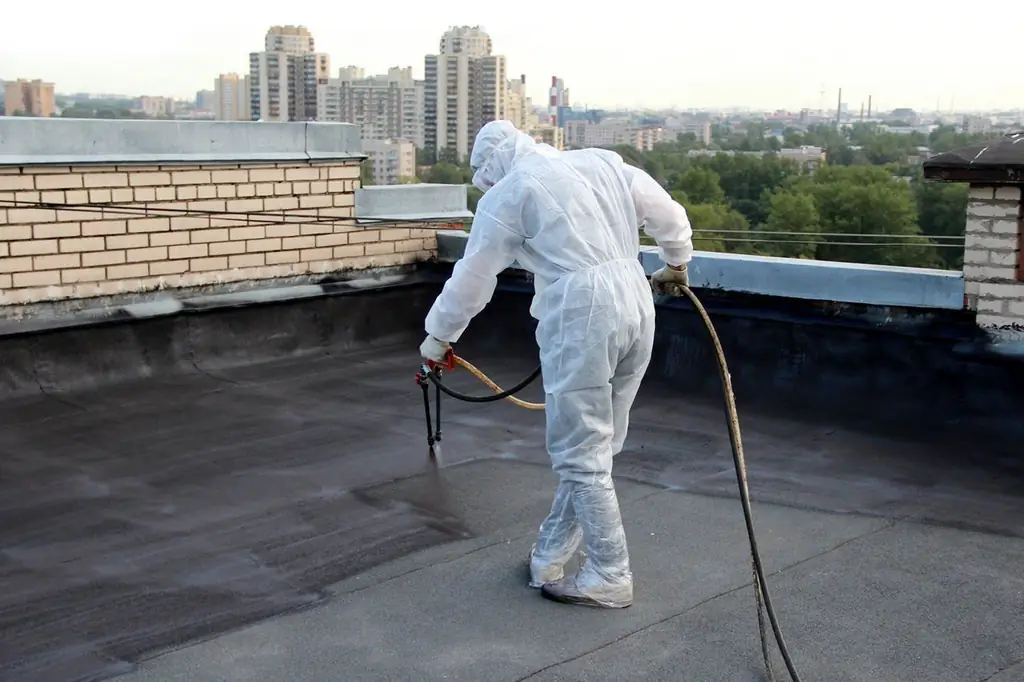
Table of contents:
- We build our bath ourselves: the correct foundation is the basis of the structure
- Soil features that should be considered when building a foundation
- The most common types of foundations used in the construction of baths
- Building a columnar foundation
- Column foundation on drill piles
- Building a tape-like foundation
- Formwork installation and mortar preparation
- Building a slab foundation
- Author Bailey Albertson [email protected].
- Public 2023-12-17 12:53.
- Last modified 2025-01-23 12:41.
We build our bath ourselves: the correct foundation is the basis of the structure

Summer is a time of construction and renovation for owners of private houses and household plots. And why not prepare for winter and provide your family with an excellent, strong bathhouse?
It is known that the construction of such an object is not an easy task, requiring certain skills and special knowledge. But there are elements that can be easily dealt with with your own hands. For example, even a beginner can make a foundation for a bathhouse if he follows the advice of experts.
The foundation for the bath has a special purpose: it must not only distribute the load of the entire structure along the ground, but also protect the walls from moisture. Therefore, its dimensions and structure should be calculated based on the characteristics of the soil, the size of the building and the materials used.
Content
- 1 Soil features that should be considered when building a foundation
- 2 The most common types of foundations used in the construction of baths
- 3 Building a columnar foundation
- 4 Column foundation on drill piles
- 5 Building the foundation of the strip view
- 6 Installation of formwork and preparation of mortar
- 7 Building a slab foundation
Soil features that should be considered when building a foundation
The soil on the site where the bath will be built must meet certain requirements in order to avoid subsequent subsidence of the foundation and the entire structure. For example, a soil based on peat, silt or fine sand is completely unsuitable for this purpose: it is prone to swelling, sliding and uneven liquefaction.
Sometimes, in such cases, a coarse sand cushion is a good solution. To do this, a trench is dug out, corresponding to the size of the foundation, the bottom is laid with coarse sand, watered and thoroughly tamped.
Of course, homogeneous dry soil with good density is ideal for foundations. But not every owner can boast of such a wonderful plot. In the case of heterogeneous soil with high humidity, the base of the foundation should be dug to a depth of half a meter or more. The fact is that during winter frosts, soil with high humidity, freezing, will raise the foundation, and in summer, after thawing and drying, on the contrary, it will lower it. From this, the walls can "play" and crack. To avoid this, you should know the depth of soil freezing, and during construction, lay the foundation 20 centimeters below this level.

The most common types of foundations used in the construction of baths
Usually, in our latitudes, a columnar, strip or slab foundation is preferred for a traditional Russian bath. These types of bases are quite simple to erect and reliable in operation. In addition, it is not difficult to find materials for them in any building supermarket.
When choosing the type of foundation, one should, first of all, be guided by the type of soil on the site where the bath is being built. For example, it is customary to install a columnar foundation on clay or loamy soil with deep groundwater. The advantages of a columnar foundation are especially noticeable when building cobbled, frame or chopped baths; in such cases, no additional jumpers are required between the posts. Loose, low-bearing soil is not suitable for this type of foundation, and the use of heavy materials in the construction is not recommended.
The strip foundation is usually used for the construction of small structures. This foundation includes reinforced concrete blocks and rubble stones fastened together. Depending on the type of structure and the size of the log house under construction, the width of the foundation is calculated. The strip foundation is quite simple in design, but it will require high labor costs, a large amount of work and materials used in the construction.
The slab foundation (also called monolithic) is considered by many to be the most reliable. It is the best option if the soil on the building site is weak and prone to swelling. In addition, when erecting the walls of a bathhouse, using a monolithic slab as a foundation, you save yourself the need to fix the wall on a certain section of the base. On the contrary, the walls can be moved as you see fit, besides, they can all be load-bearing. The slab foundation will protect the bath from the penetration of rodents and insects and will not require expensive waterproofing.

Each of these types of foundation requires a careful approach during construction, so we will consider them in detail separately.
Building a columnar foundation
The installation of the foundation begins with a breakdown of the site allocated for the construction of a bath, according to the drawn up plan. In this case, the optimal use of the Egyptian triangle with sides 3 X 4 X 5 will help to correctly set the right angles of the base. Such a triangle is easy to make on your own from improvised means: boards and ropes. Correct angles are checked by measuring and comparing the diagonals.
The recommended distance between the installed posts should not exceed 2.5 meters. The materials used in their construction are concrete, reinforced concrete, brick or stone. In places where the inner and outer walls meet each other, the pillars are placed at the angle of the building. In such cases, the gaps between the posts can exceed 2.5 meters, so additional supports will need to be installed. The standard section of the pillars for the foundation for the construction of a bath is 50-60 cm, but it can be made smaller if you are building a lightweight bath.
A simple bath can be installed not on stone, but on wooden poles, popularly called chairs. This version of the foundation for a bath will be much cheaper. The principle of the arrangement of such pillars is no different from the installation of stone or concrete fortifications.

The depth to which wooden pillars should be dug in is calculated, based on the depth of soil freezing. About 25 centimeters are added to it.
Before you walled chairs in the ground, they should be thoroughly dried and treated with antiseptics. In order to reduce the impact of external factors on wooden poles, they are wrapped with a waterproof material, for example, roofing felt or polyethylene film, and covered with tar.
When erecting concrete and brick supports used as the basis of a columnar foundation for a bath, you should pay special attention to the fact that they do not withstand tensile deformation. To prevent it, the pillars should be built strictly vertically: this will help to avoid eccentric effects. During construction, the cross section of the pillars is recommended to be overestimated.
Column foundation on drill piles
In modern construction of baths with their own hands, they increasingly use a columnar foundation based on bored piles. Such piles are fast and easy to erect. For such a foundation you will need:
- fittings;
- borehole;
- asbestos-cement pipe;
- concrete.

You will spend no more than 30 minutes drilling a well with a depth of about one and a half meters.
If the soil on the site has standard bearing characteristics, then the borehole diameter is up to 25 centimeters. An asbestos-cement pipe 20 cm in diameter is placed in the well, the gaps on the sides are filled with sand and concrete mortar for leveling. Also, the pipe is filled with a solution from the inside.
The next step is to raise the pipe to the specified height according to the project. At the same time, a certain amount of concrete mixture will come out of it, which will become the basis for the pile. If necessary, the solution is added inside the pipe, while 10-15 cm should remain to the upper level. After the mixture is compacted from the inside and outside, reinforcement is inserted into it.
Using this technology, make the required number of pillars. In summer, in hot weather, such a support will dry out for no more than a week. Cover it with plastic wrap when it rains to prevent water ingress.
The columnar foundation for the bath is ready. Now you can start building the walls.
Building a tape-like foundation
The strip foundation for the bath is a continuous reinforced concrete strip along the perimeter, practically not buried in the ground. The depth at which the base of the foundation will be located is calculated based on the characteristics of the soil: dry and sandy soil allows the sole to be raised 50-60 cm above the freezing level, wet and uneven - requires installation 20-30 cm below this level.

White fine sand will serve as a cushion for the foundation in case of construction on uneven ground. This pillow consists of three identical layers. Each of them is poured with water and compacted. As a result, a three-layer pillow should be 30-40 cm thick.
A uniform layer of gravel about 15 cm thick is poured over the sand cushion, which in turn is filled with cement mortar. This procedure is repeated several times until the gravel, poured with the solution, reaches zero level, that is, the surface of the earth. At this level, a wooden formwork is made, into which concrete is poured, and a waterproofing layer is installed. As such, it is advisable to use 2-3 layers of roofing material, laid tightly on a vertical surface, and bituminous mastic.
Formwork installation and mortar preparation
Formwork is a frame made of planks and beams that will become the supporting walls for the foundation. Boards should be tightly fitted to each other to avoid leakage of the grout to be poured. During installation, the formwork must be cleaned and moistened with water. The mortar is poured into the formwork in 15 cm layers, each of which is rammed and leveled. Work on pouring concrete mortar should be carried out in hot sunny weather, avoiding rain and dampness.
In preparing the solution, the quality of the constituent components is very important. Sand and gravel must be dried and free of soil, clay and debris. Don't skimp on cement quality! The ratio of the components in the solution should be 6 parts of gravel to 4 parts of sand, the amount of water should not exceed 75% of the mass of cement.
The mixture is prepared in the following sequence:
- take the required amount of sand;
- take the required amount of cement;
- fill a clean dry container with components, mix thoroughly;
- add the required amount of gravel to this mass;
- stir again;
- pour the mixture with water using a watering can or a hose with a low pressure;
- stir again.
For additional strength, it is recommended to install a frame made of reinforcing rods laid along and across.

Building a slab foundation
For a slab foundation, first of all, you should create a slab of reinforced concrete with a thickness of about 30 cm, corresponding to the perimeter of the bath being built
If there is clay soil on the site, it should be fixed with sand and gravel. To do this, having marked the perimeter of the future building, dig a pit 1.5 m deep, remove the clay and fill the place with gravel or sand, carefully ramming the material. If the soil is sandy, then it is enough to remove only the top layer of the soil and replace it with sand. Level the surface using a level - there should be no slopes. Make the layout of the future building, strictly adhering to the perpendicularity of the sides.
The next stage is the installation of the formwork. Since you are making a monolithic slab, the requirements for the rigidity of the formwork structure will be higher than when installing a strip foundation, since the load is much higher. Therefore, during installation, it will not be superfluous to use additional props.
Stage three: waterproofing. As such, it is convenient to use a dense polyethylene film. Ensure the surface is sufficiently dense before laying it. To do this, sprinkle cement on top of the sand inside the formwork at the rate of 50 kg per 10 square meters, mix thoroughly with a rake to a shallow depth (4 cm will be enough) and pour water. After curing, lay the film.

Next, prepare the fittings. A suitable option for strength and weight would be rods with a diameter of 14 mm. The length of the reinforcement should be 10 cm shorter than the installation site: this will save the bars from contact with the environment and corrosion. The reinforcement should be laid with a lattice, providing a cage with a size of 15-20 cm, and twisted with steel wire about 2 mm in diameter, or nylon ties. There should be two such grids, one above the other. Leave a distance of 20 cm between the bottom and the top, while the bottom one is raised above the waterproofing layer by 5 cm. During concreting, the upper grating should be recessed by 5 cm. Accordingly, the slab height will be 30 cm.
Recommended:
Types Of Interior Doors With A Description And Characteristics, Depending On The Material Of Production And Design Features

How interior doors are arranged and what materials they are made of. Characteristics and features of different models of interior doors
What Breeds Of Cats Are: The Name Of Rare Cats, Classification By The Length And Type Of Wool, Color, Type Of Ears And Tail, Photographs

The origin of cat breeds. Their classification is based on external features. A variety of species. Rare breeds of cats. How to identify the breed
Roofing Cake For A Soft Roof, As Well As The Features Of Its Structure And Installation, Depending On The Type Of Roof And The Purpose Of The Room

What is a cake under a soft roof. Features of its device and installation. How to arrange a roofing cake from roll and piece materials
Roof Waterproofing And Its Types, As Well As Features Of Its Design And Installation, Depending On The Roofing Material

What materials can be used to arrange reliable waterproofing of the roof and how to install it
What Is A Roof Valley, Its Purpose, Structure And Characteristics, As Well As Installation Features Depending On The Type Of Roof

What is endova. Types of valleys. Features of installing the valley, depending on the roofing material. What material to make the valley from. Photo and video
